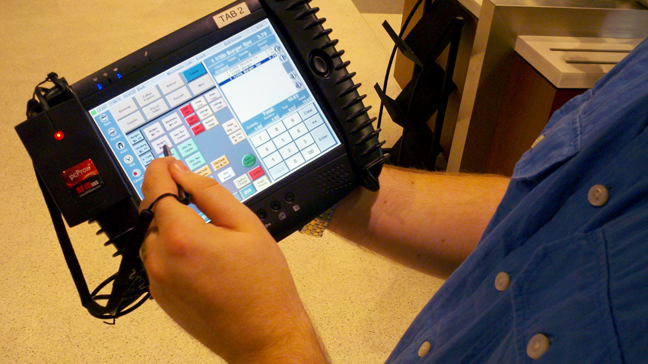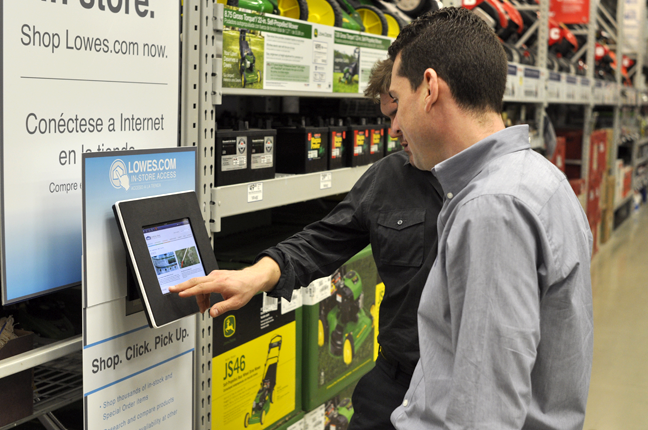|
Size: 16417
Comment:
|
Size: 17003
Comment:
|
| Deletions are marked like this. | Additions are marked like this. |
| Line 118: | Line 118: |
------- = Discuss & Add = Please do not change content above this line, as it's a perfect match with the printed book. Everything else you want to add goes down here. == Examples == If you want to add examples (and we occasionally do also) add them here. == Make a new section == Just like this. If, for example, you want to argue about the differences between, say, Tidwell's Vertical Stack, and our general concept of the List, then add a section to discuss. If we're successful, we'll get to make a new edition and will take all these discussions into account. |
Darkness
It’s pitch black outside. The air is cold and wet, yet carries a lingering sweet smell. Sporadic beams of light dance in the night, casting an eerie glow on the landscape. Giggles, whispers, and even the occasional scream carry through the streets, a reminder that others are about this night.
Through the eyes of one of these figures, a house is seen. The figure changes course and heads in the direction of the home. The home is unlit, and looks unoccupied. In one hand, the figure holds a large sack, the other yields a blunt sword.
As the figure makes his way now up the porch and to the door, the hand with the sword points forward. The hand is not human. It’s about twice as big a man’s hand. Coarse, dark fur covers its skin, while jagged claws extend from the aged fingers.
The creature now stands directly in front of the door, its purpose clear. It only wants one thing and that thing remains inside the house. With a blast of energy the hand with the sword raises, lunges, and slams into the house.
A chime echoes. The front door opens. The man who opens the door smiles happily while looking down, hardly frightened by the four foot tall, hairy monster screaming “Trick or Treat!"
That sounds like a great idea
Take a moment to catch your breath, slow your heart beat down. Despite my enjoyment of Halloween, it’s not my focus for the remainder of this chapter. However, the doorbell that so frequently sounds during that annual night is.
The doorbell is an outstanding example of an effective interactive control. If a 10 year old dressed as a monster with oversized, latex hands, in the dark can use it effortlessly, and anyone listening in the house (even the family dog) instantly understands what it means, it must work well.
Let’s examine why the doorbell is an effective control using Donald Norman’s Interface Model.
Make it Visible
 Any control needs to be visible when an action or state change requires its presence. The doorbell is an example of an “always present” control. There aren’t that many components on the door anyway (door knob, lock, windows and peepholes, maybe a knocker), so the doorbell is easy to locate. In many cases, the doorbell is illuminated, making it visible, and enticing, when lighting conditions are poor.
Any control needs to be visible when an action or state change requires its presence. The doorbell is an example of an “always present” control. There aren’t that many components on the door anyway (door knob, lock, windows and peepholes, maybe a knocker), so the doorbell is easy to locate. In many cases, the doorbell is illuminated, making it visible, and enticing, when lighting conditions are poor.
Cultural norms, and prior experiences, have developed a mental model in which we expect the doorbell to be placed in a specific location -- within sight, within easy reach, and to the side of the door. So our scary monster was quickly able to detect the location of the doorbell from even his relatively more limited prior knowledge, as well as see it in the dark.
Having an object visible doesn’t have to mean it can be seen. It can also mean that the object is detected. Consider someone who is visually impaired. They still have the prior knowledge that the doorbell is located on the side within eye and reach level. It’s shape is uniquely tactile, making it easy to detect when fingers or hands make contact. Most doorbells are in notably raised housing, and while it's not clear if this is an artifact of engineering or not, it serves to make them easy to find and identify by touch as well.
In mobile devices, this is a very important principle. Many times, we don’t have the opportunity to always look at the display for a button on the screen, but we can tactilely feel the different hardware keys. Consider people playing video games. Their attention is on the TV, not the device controller, yet they are easily able to push he correct buttons during game play.
Mapping
The term "mapping" within interactive contexts describes the relationship established between two objects, and implies how well users understand their connection. This relates to the mental model a user builds of the control and its expected outcome. When we see the doorbell, we have learned that when pushed, it will sound a chime that can be heard from the inside of the house or building to notify the person inside, that someone is waiting outside by the door.
Our ten year old scary monster, mapped that pushing and sounding of the doorbell will both notify the people inside that a trick or treater is there and that he will receive a handful of free candy.
So mapping relates heavily on context. If the boy pushes the doorbell on a night other than Halloween, the outcome will differ. The sounding chime will remain which indicates a person is waiting outside, but the likelihood of someone there to answer and even more, to hand out candy, is much more unlikely.
On a mobile device, controls that resemble our cultural standards are going to be well understood. For example, let’s relate volume with a control. In the context of a phone call, pushing the volume control is expected to either increase or reduce the volume levels. However, if the context changes, i.e, on the idle screen, that button may provide additional functionality, bringing up a modal pop-up to control screen brightness, and volume levels. Just like call volume, pushing up will still perform an increase and pushing down will perform a decrease in those levels.
But you must adhere to common mapping principles related to your user’s understanding of control display compatibility. On the iPhone, in order to take a screen shot, you must hold the power button at the same time as the home button. This type interaction is very confusing, and impossible to discover unless you read the manual (or otherwise look it up, or are told), and is hard to remember as the controls have no relation to the functional result.
Onscreen and kinesthetic gestures can be problematic too if the action isn’t related to the type of reaction expected. Use natural body movements that mimic the way the device should act. Do not use arbitrary or uncommon gestures.
Affordances
Affordances describe that an object’s function can be understood based on its properties. The doorbell extends outward, can be round or rectangular, and has a target touch size larger enough for a finger to push. Its characteristics afford contact and pushing.
On mobile devices, physical keys that extend outward or recessed inward afford pushing, rotating, or sliding. Keys that are grouped in proximity afford a common relationship between the two of them, many times polar functionality. For example, 4 way keys afford directional scrolling while and the center key affords selection.
Yes, affordances are just like other understandings of interactive controls and are learned. Very few of these are truly "intuitive," (meaning innately understandable) despite the common use of the term, and may vary by the user's background such as regional or cultural differences.
Provide Constraints

Restrictions on behavior can be both natural and cultural. They can be both positive and negative, and they can prevent undesired results such as loss of data, or unnecessary state changes.
Our doorbell from above could only be pushed not pulled (in fact, a style of older doorbell did require pulling a significant distance). The distance which the button could be offset is restricted by the mechanics of the device; it cannot be moved any direction except along the "z" axis.
Despite the small surface and touch size, the button can still be pressed down by a finger, a entire hand or any object, even one much larger than the button’s surface. In this context, that lack of constraint was beneficial. A user doesn’t have to be entirely accurate using the tip of the finger to access the device. Our scary monster, with huge latex hands holding a sword was still able to push the button down, allowing for a quick interaction. More commonly, the doorbell can be pushed by someone in mittens, or by an elbow when carrying the groceries in.
On mobile devices, however, it’s often necessary to define constraints on general interactive controls. Some constraints that should be considered involve:
Contact Pressure – Having a threshold of contact pressure that initiates the control should be used to prevent accidental input. Touch screens and similar controls without perceptible movement will have a lower threshold, as opposed to hardware keys which move to make contact.
Time of contact– Similar to contact pressure, requiring keys remain pressed longer may provide a useful constraint to accessing buttons that can lose user-generated data. Pushbutton power keys, for example, do not immediately turn devices on or off but must be held for a few seconds.
Axis of control – The amount of directional movement can be restricted to a single axis or a particular angle or movement. Gestural interactive controls must use appropriate constraints so they are not activated out of context, even though the user's finger is not constrained itself. Unlocking an idle screen may require a one-axis drag, to access additional features on the device. This is not different for hardware keys; the user may "nudge" controls by using scroll controls at an angle. Only the input hardware or sensing may be constrained.
Size of control – The ability to interact with a button can heavily depend on it’s physical size and its proximity to other buttons or hardware elements. With on-screen targets, careful consideration needs to be used when designing UIs that have these interactive controls. Small touch targets must have larger touch areas, and not be too close to a raised bezel. Refer to the General Touch Interaction Guidelines found earlier in the Input & Output Section.
Use Feedback

Feedback describes the immediate perceived result of an interaction. It confirms that action took place and presents us with more information. Without feedback, the user may believe the action never took place leading to frustration and repetitive input attempts. The pushed doorbell provides immediate audio feedback that can be heard from outside as well as inside the house. Illuminated doorbells also darken while being pressed, providing additional feedback to the user as well as confirmation in loud environments, for more sound-proof houses or for users with auditory deficits.
Use feedback properly. Unlike the doorbell's immediate indicator of of action, an elevator call or floor button (both work the same, as they should) remains illuminated as a request-for-service, until it has been fulfilled. As an anti-pattern, crosswalk request buttons generally provide no feedback, or beep and illuminate as pressed. There is no assurance the request was received, or is properly queued.
On mobile devices, when we click, select an object, or move the device, we expect an immediate response. With general interactive controls, feedback is experienced in multiple ways. A single object or entire image may change shape, size, orientation, color, or position. Devices that use accelerometers provide immediate feedback showing page flips, rotations, expand, and slide.
Gestural Interactive Controls
There are a growing number of devices today that are using gestural interactive controls as the primary method input. We can expect smartphones, tablets, and game systems to have some level of these types of controls.
Gestural interfaces have a unique set of guidelines that other interactive controls need not follow.
- One of the most important rules of gestural controls is that they need to resemble natural human behavior. This means that device behavior must match the type of gestural behavior the human is carrying out.
- Simple tasks should have simple gestures. A great colleague and friend of mine who is visually impaired was discussing her opinions on gestural devices. She provided me an example of how gestures actually make her interactions quite useful. If she typed up an entire page, and finds later that she is unhappy with what she wrote, she can shake her device to erase the entire page. A simple shake won’t active this feature (constraint) so she is confident she won’t lose her data accidentally. But rather than her having to delete line by line, this simple gesture quickly allows her to perform an easy task.
Dan Saffer, author of Designing Gestural Interfaces (Saffer, 2009) points out five reasons to use interactive gestures:
More natural interactions -- People naturally interact and manipulate physical objects.
Less cumbersome or visible hardware -- Mobile devices are everywhere: in our pockets, hands, tables, on storefront walls, or kiosks. Gestural controls don’t rely on the large physical components such as keyboards, and mice to manipulate the device.
More flexibility -- Using sensors that can detect our body movements remove our hand-eye dependence and coordination normally required on small mobile screens.
More nuance -- A lot of human gestures are related to subtle emotional forms of communication. Like winking, smiling, rolling our eyes. The nuance gestures have yet to be fully explored in today’s devices, leaving an area of opportunity in user experience.
More fun -- Today's gesture based games encourage full body movement. Not only is it fun, it provokes a fully-engaging social context.
Patterns for General Interactive Controls
The patterns within this chapter describe how General Interactive Controls can be used to initiate various forms of interaction on mobile devices. The following patterns in the chapter will be discussed.
Directional Entry -– Controls used to select and otherwise interact with items on the screen, a regular, predictable method of input must be made available. All mobile interactive devices use list and other paradigms that require indicating position within the viewport.
Press-and-hold -– This mode switch selection function can be used to initiate an alternative interaction.
Focus & Cursors -– The position of input behaviors must be clearly communicated to the user. Within the screen, inputs may often occur at any number of locations, and especially for text entry the current insertion point must be clearly communicated at all times.
Other Hardware Keys -– Functions on the device, and in the interface, are controlled by a series of keys arrayed around the periphery of the device. Users must be able to understand, learn and control their behavior.
Accesskeys -– Provide one-click access to functions and features of the handset, application or site for any device with a hardware keyboard or keypad.
Dialer -– Numeric entry for the dialer application or mode to access the voice network varies from other entry methods, and has developed common methods of operation that users are accustomed to.
On-screen Gestures -– Instead of physical buttons and other input devices mapped to interactions, these allow the user to directly interact with on-screen objects and controls.
Kinesthetic Gestures -– Instead of physical buttons and other input devices mapped to interactions, these allow the user to directly interact with on-screen objects and controls using body movement.
Remote Gestures -– A handheld remote device, or the user alone, is the best, only or most immediate method to communicate with another, nearby device with display.
Discuss & Add
Please do not change content above this line, as it's a perfect match with the printed book. Everything else you want to add goes down here.
Examples
If you want to add examples (and we occasionally do also) add them here.
Make a new section
Just like this. If, for example, you want to argue about the differences between, say, Tidwell's Vertical Stack, and our general concept of the List, then add a section to discuss. If we're successful, we'll get to make a new edition and will take all these discussions into account.
